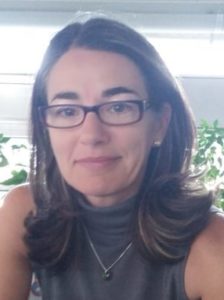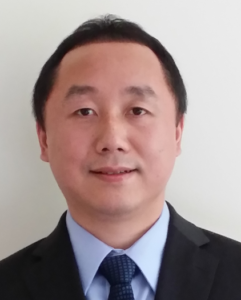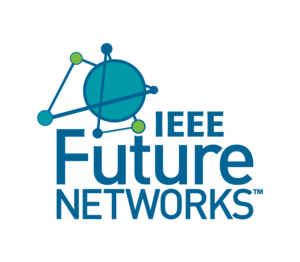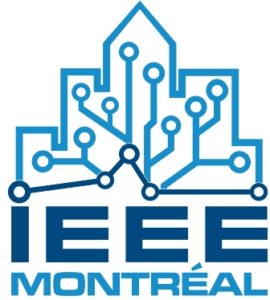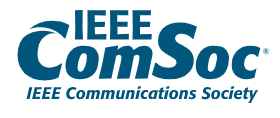13 October 2022 // HYBRID and VIRTUAL
SYMPOSIUM ORGANIZERS
Dan Kilper, CONNECT Centre, Trinity College Dublin, Ireland, dan.kilper@tcd.ie
Lena Wosinska, Chalmers University of Technology, Sweden, wosinska@chalmers.se
Zuqing Zhu, University of Science and Technology of China (USTC), China, zqzhu@ieee.org
| Click Here to Download the Program Schedule |
INVITED SPEAKERS
Carmen Mas Machuca, Technical University of Munich (TUM)
Cost-efficient Multi-period Optical Network Planning: Alternatives and Analysis
Abstract: One of the main objectives of network operators is to upgrade their core optical networks in order to keep the ever-growing demands. In this talk, we will first introduce the multi-period Routing, Configuration, and Spectrum Assignment (RCSA) algorithm. The RCSA will be then applied to different alternatives that operators may consider to update their network. These alternatives will be compared so that we will conclude with some guidelines for operators.
Short Bio: Carmen Mas Machuca (Senior Member, IEEE) is Privat Dozent/Adjunct Teaching Professor with the Chair of Communication Networks, at the Technical University of Munich (TUM), Germany. She has published more than 160 peer-reviewed articles. Her main research interests include techno-economic studies, network planning optimization problems, resilience, robustness and sovereignty analyses, and next-generation communication networks.
She is currently NetSoft’22 TPC Co-Chair, ONDM’22 Workshop Chair, and IEEE Transactions on Network and Service Management (IEEE TNSM) Associate Co-Editor of the Special Issue on ‘‘Design and Management of Reliable Communications Network.’’ She was recently NoF’21 General Co-Chair, ONDM’21 TPC Co-Chair, and General Chair and host of the 12th Conference of Telecommunication, Media and Internet Techno-Economics (CTTE) at TUM. She is a reviewer of IEEE Transactions on Network and Service Management, IEEE Transactions on Network Science and Engineering, etc. Since 2013, among other courses, she is teaching “Techno-Economic Analysis of Telecommunication Networks” at the MSCE/MCEI master programs at TUM. Previously, she received the Dipl.-Ing. degree (master’s) from the Universitat Politècnica de Catalunya (UPC) Spain, in 1995; and the Dr.-Ing. degree (Ph.D.) from the École Polytechnique Fédérale de Lausanne (EPFL) Switzerland, in 2000.
Chongjin Xie, Alibaba Group
Scaling Optical Interconnects for Future Data Center Networks
Abstract: Inter-data center interconnects, typically referred to as DCI, has become dominant in global fiber infrastructure and one of the main driving forces for optical transport network technologies. Recent advances in DCI networks, including both data plane and control plane technologies, are presented. Future challenges and potential technologies to scale future data center optical networks are discussed.
Short Bio: Chongjin Xie is a senior director at Alibaba Cloud, leading an optical network team working on datacenter optical interconnects and transport networks. Prior to joining Alibaba in 2014, Dr. Xie was a Distinguished Member of Technical Staff at Bell Labs, Alcatel-Lucent, doing research on optical communication systems and networks. He was a post-doctor at Chalmers University of Technology from 1999 to 2001, and received his M.Sc. and Ph.D. degrees from Beijing University of Posts & Telecommunications in 1996 and 1999, respectively. Dr. Xie has published one book, 5 book chapters and over 200 papers, and served as a program chair and general chair of OFC’2019 and OFC’2021, respectively. He is a Fellow of IEEE and a Fellow of Optica.
Darli Augusto de Arruda Mello, University of Campinas (Unicamp)
Digital Twins in Optical Networks: Insights and Applications
Abstract: Optical networks are experiencing profound changes with the adoption of software-defined networking concepts and the application of machine-intelligent algorithms for smart network management and control operations. These new features require a reliable digital representation of the network to exploit its full capabilities, i.e., a mirror of the actual network or, rather, a network digital twin (NDT). The development of NDTs in optical networks is still in its infancy, and its efficient implementation depends on intense R&D efforts involving industry and academia. There are open issues regarding the interaction with analytic models and telemetry services and its interoperation with other applications. This work discusses the main challenges related to implementing NDTs in optical networks and details an application for ML-based soft failure localization.
Short Bio: Darli Mello studied Electrical Engineering at the University of Campinas (UNICAMP), Brazil, where he graduated in 2000. In 2002 he received the M. Sc. degree from the Institute for Communications Engineering (LNT) at the Munich University of Technology (TUM), Germany. During his master’s studies, he carried out both experimental and theoretical work at the Siemens research labs in Munich. In 2006 he received the Ph.D. degree from UNICAMP. After his Ph.D. studies, he spent one year with Padtec Optical Components and Systems as a senior technology engineer. From August 2008 to March 2014 he was with the Electrical Engineering Department (ENE) of the University of Brasilia (UnB) as an Assistant Professor. Since April 2014 he has been an Associate Professor at the Communications Department (DECOM) of the School of Electrical and Computer Engineering (FEEC), Unicamp. From January 2019 to January 2020 he was a visiting scholar at the Ginzton at Stanford University, working on coupled SDM transmission. His main research interests are optical transmission (DSP for coherent communications, SDM transmission) and networking (survivability, QoT). Darli Mello was TPC member of several conferences, including OFC, ACP, ICC, and Globecom. He was the TPC co-chair of SBrT 2011, and of the Optical Communications Subcommittee of LAOP 2016. He is the TPC co-chair of SPPCOM 2022 in Maastricht, The Netherlands.
Massimo Tornatore, Politecnico di Milano
End-to-end Learning or Parameter Refinement? Lessons Learned when using Machine Learning in Optical Networks
Abstract: Machine learning is enabling new forms of “low-margin” optical network design. This talk discusses some recent lessons learned when applying machine learning for different problems arising in low-margin design.
Short Bio: Massimo Tornatore is currently an Associate Professor with the Department of Electronics, Information, and Bioengineering, Politecnico di Milano. He also holds an appointment as Adjunct Professor at University of California, Davis, USA and as visiting professor at University of Waterloo, Canada. His research interests include performance evaluation, optimization and design of communication networks (with an emphasis on the application of optical networking technologies), network virtualization, network reliability and machine learning application for network management. In these areas, he co-authored more than 400 peer-reviewed conference and journal papers (with 20 best paper awards), 2 books and 1 patent. He is a member of the Editorial Board of IEEE Communication Surveys and Tutorials, IEEE Communication Letters, IEEE Transactions on Network and Service Management, and Elsevier Optical Switching and Networking.
Xiang Liu, Huawei
Innovative Optical Network Technologies for F5G and Beyond
Abstract: We review a series of innovative optical network technologies for the 5th generation fixed network (F5G) and beyond, aiming to support enhanced fixed broadband, guaranteed reliable experience, full fiber connection, green and agile optical networking, real-time resilient link, and optical sensing and visualization. Particularly, end-to-end network slicing in F5G for supporting a massive number of services with agile hitless bandwidth adjustment at fine granularity will be described. In addition, proof-of-concept demonstrations of the emerging fiber-to-the-room (FTTR) technology that offers telecom-quality Wi-Fi experience and premium home broadband connectivity to multiple clouds will be presented. Moreover, distributed fiber sensing in deployed fiber infrastructures and visualization of optical networks through advanced sensing techniques will be discussed. Finally, future perspectives on the network evolution beyond F5G will be provided.
Short Bio: Xiang Liu is Chief Optical Standards Expert of Huawei Technologies. He had been VP for Optical Transport and Access at Futurewei Technologies and a Distinguished Member of Technical Staff at Bell Labs. He received the Ph.D. degree in applied physics from Cornell University in 2000. As a top-ranked Google Scholar in optical communications, he has authored/co-authored more than 350 journal and conference papers and holds over 100 US patents. He has served as a Technical Program Co-Chair of OFC 2016 and a General Co-Chair of OFC 2018. Xiang is a Fellow of the IEEE and the OSA (now OPTICA).
Christine Tremblay, École de technologie supérieure (ÉTS) in Montreal, Canada
Agile Metropolitan Filterless Optical Networking
Abstract: The tremendous traffic growth generated by video, cloud, future 5G and beyond services is compelling network operators to re-think network architectures to ensure flexible and efficient service support. Filterless optical networking based on broadcast-and-select nodes and coherent transceivers is considered as a disruptive approach for delivering network agility in a cost-effective manner. The filterless network concept has been widely studied for terrestrial and submarine applications. In this paper, we explore the suitability of filterless architectures in metropolitan networks through a comparative performance analysis with a conventional metro network based on active switching. The results show that a filterless solution with lower, but adequate, network connectivity can achieve up to 36% lower power consumption and up to 45.4% cost reduction at the expense of a 19% higher spectrum usage, which makes the filterless architecture an attractive alternative for metro network deployments.
Short Bio: Christine Tremblay (Senior Member, IEEE) is the Founding Researcher and Head of the Network Technology Lab, as well as the Associate Director for the Ph.D. program, at the École de technologie supérieure (ÉTS) in Montreal, Canada. She received her PhD degree in Engineering Physics (Optoelectronics) from Polytechnique Montreal in 1992. Before joining academia in 2004, she held senior R&D and technology management positions in the private sector with the National Optics Institute (INO), EXFO, Nortel and Roctest.
Her team pioneered the research on filterless optical networking, a disruptive network architecture alternative demonstrated and deployed on national and regional networks. Her current research interests include machine learning for optical networking and network performance monitoring, as well as advanced access networks. She has been the co-instructor for SC314 and SC210 hands-on courses of the Optical Society of America (OSA) on optical fiber and polarization measurements at the Optical Fiber Communication (OFC) Conference. Member of Quebec FRQNT Strategic Clusters STARaCom and COPL, she is serving as Program Committee Member for the OFC Subcommittee N3: Architecture and software-defined control for metro and core networks.
Andrew Lord, British Telecom
A Vision for Optical Networks in a World of Increased Energy Costs, and Bottlenecks in Electronic Switching and Optical Spectral Efficiency
Abstract: As Shannon’s limit is approached, global telecom operators still have to provide networks to support exponentially growing traffic demands. This talk will look at the current pressures on optical networks, and assess some radical solutions including multi-band and multi-fibre networks, new fibre types and an increased use of optical switching.
Short Bio: Andrew joined BT in 1985 after a BA in Physics from Oxford University. He has helped design a wide range of optical network systems and technologies, including long haul subsea and terrestrial DWDM networks. He has been responsible for optical fibre and systems specifications. He currently leads BT’s optical research including optical access, high speed transmission and quantum communications. He has recently initiated BT’s quantum research, with applications in areas such as secure communications, timing and sensing. He regularly speaks at conferences, sits on several organising committees, including ECOC and was Technical Program Chair for OFC 2015 and General Chair for OFC 2017. He will be TPC co-chair of ECOC 2023. He is Editor-in-Chief of the Journal of Optical Communications and Networking, He is Visiting Professor at Essex University, Senior Member of the IEEE and a BT Distinguished Engineer.
Accelerating High-Speed Broadband Services through Wireline Wireless Access
Abstract: Based on a wireline wireless access concept, fixed wireless access (FWA) is one of the fastest growing broadband service offerings in recent years. It provides services to customers by connecting wireless network enabled customer premise equipment to public wireless networks. As the wireless network deployments continue to accelerate, Verizon is now reaching more than 135 million population with 5G Ultra Wideband on RF C-band spectrum, which enables even faster expansion of broadband services through FWA. In this presentation, we will discuss the operator’s overall broadband strategy with a focus on wireline wireless access and a visit to the standardization landscape.
Short Bio: Jun Shan Wey [SM’11] received her Ph.D. from the University of Maryland, College Park. She is currently with the Technology Standards Planning group at Verizon. She has served as an Editor of ITU-T G.989.2, G.9802.2, G.9804.2, G.9806 Recommendations, and G.Sup66 Supplement. She is a Fellow of Optica.
Christina Lim, University of Melbourne
Optical X-haul for 5G /6G: Design and Deployment Standpoint
Abstract: The investigation of the transport network in a hybrid fiber-wireless system to cater to the next generation wireless networks. We have demonstrated advanced coordination functionality in the physical layer to enable coordination between remote radio heads. We have also devised an optimization framework to jointly optimize the wireless and optical network that minimizes the deployment cost. We conclude the paper by providing insights into a reconfigurable optical architecture that can be used to support wireless networks of 6G and beyond.
Short Bio: Christina Lim (M’99-SM’04) received a Ph.D. degree in electrical and electronic engineering from the University of Melbourne, Australia, in 2000. She is a Professor in the Department of Electrical and Electronic Engineering, the University of Melbourne, Australia (since 2013), and is currently the Deputy Head of Department (2017 to present). She is currently an Associate Editor for IEEE Photonics Technology Letters and the IEEE/OSA Journal of Lightwave Technology. She has co-authored more than 300 papers in leading journals and conferences. Her research interests include fiber-wireless access technology, free-space communications, modeling of optical and wireless communication systems, microwave photonics, electro-optic sampling techniques, and optical network architectures. She is an OSA Fellow.






